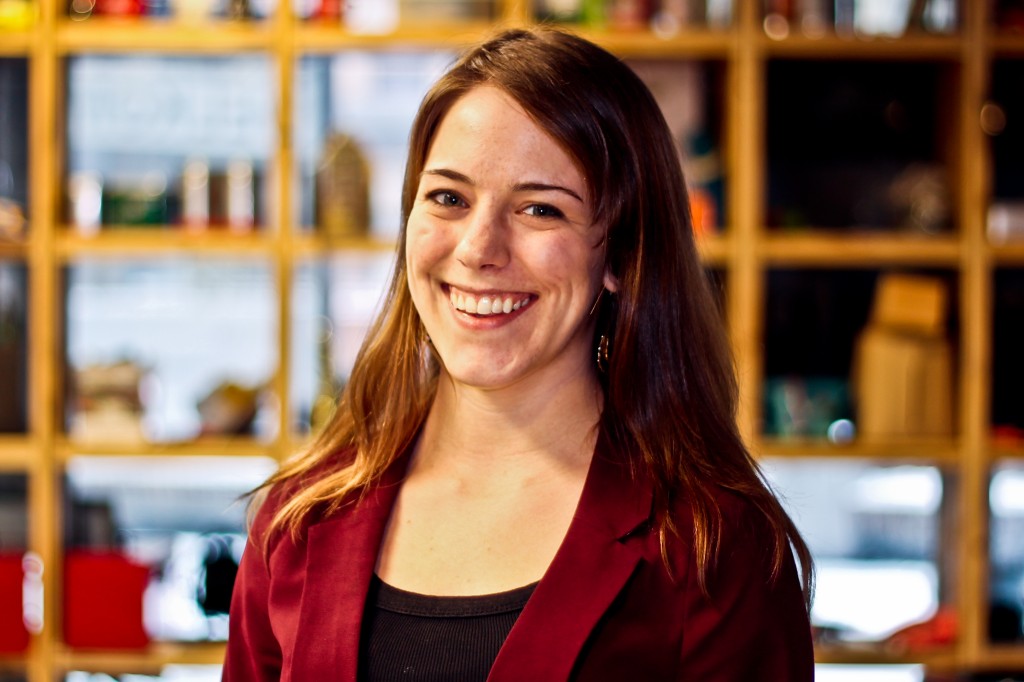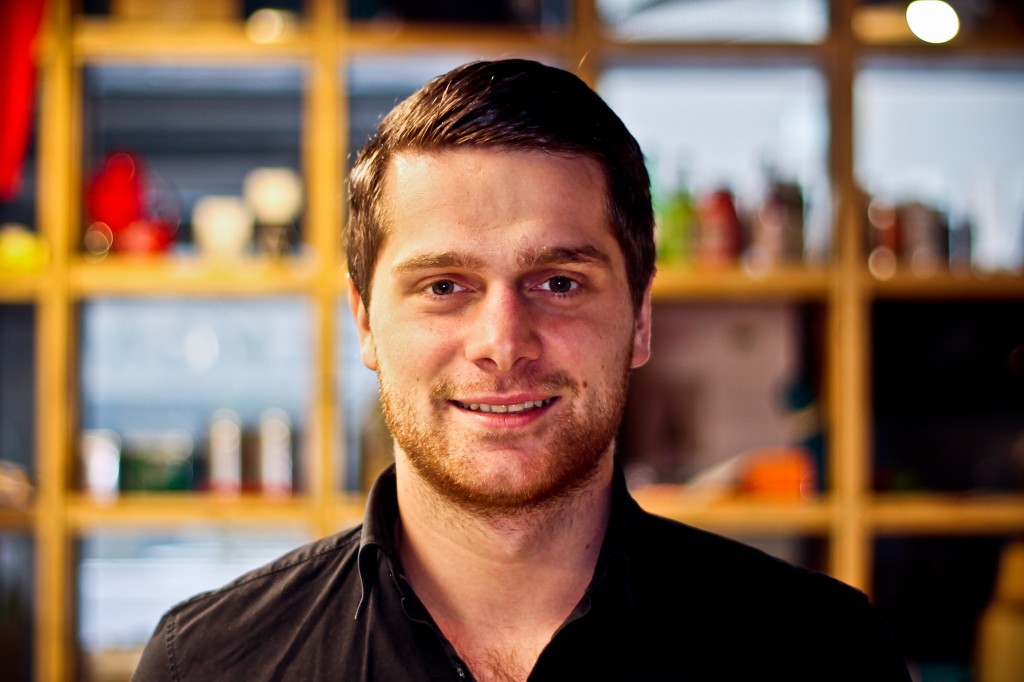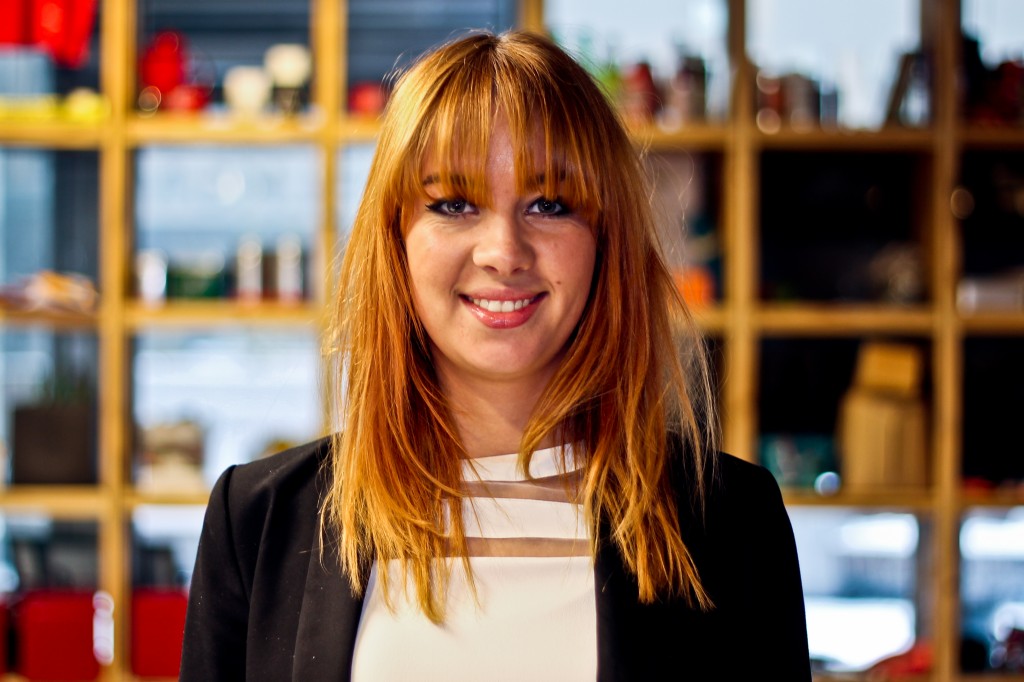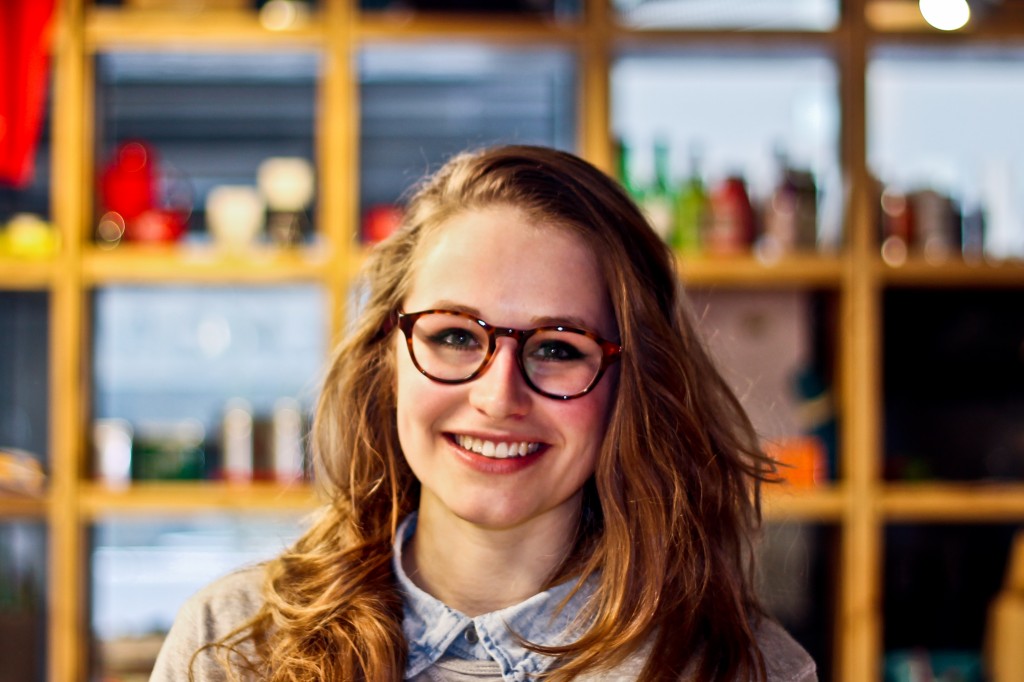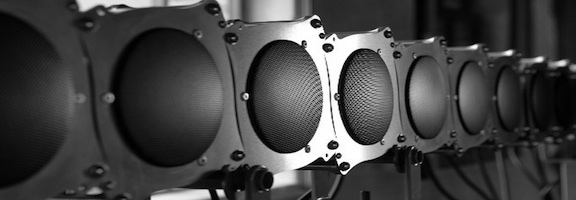
Watching the show unfold before our eyes was nothing like hearing it. Finally, after six months, we could be a part of the dream that we so diligently worked to make a reality.
Quotes from the The International Soundlings Collective about the piece:
“The opening piece merges acoustic objects, instruments and synthetic entities to one sound world. A world built on resistance and struggle. Cracking wood, hissing amplifiers and feedback tones resonate in discord. Organic materials, electronic textures and various instrumental sections construct a spatial, physical piece that leads the listener through the challenging phases the designers face in their creative process, a theme embedded in the presented collection. Read more
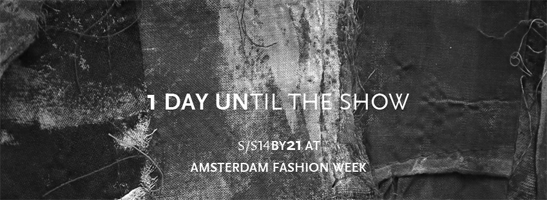
A dream is just a dream.
A goal is a dream with a plan and a deadline.
Tight deadline! we’re getting all the equipment and the audiovisual media ready to be able to share the fruits of our labor. From production arrangements with iNDiViDUALS, to preparing for final soundchecks with the Soundlings, we’re getting ready for a one-of-a-kind event. Not only is the performance be intimately limited to 250 attendees, it challenges the status quo of fashion shows on multiple levels. Check out the teaser video from the iNDi’s featuring sound design by Robin Koek.
Sound art plays a primary role in intensifying the emotional experience of the S/S14BY21iNDiViDUALS collection. What’s more one-of-a-kind experience marks an innovation for the use of new media at the Amsterdam Fashion Week.
We’re going to work with some of the Soundlings tomorrow to make a binaural recording of the sound art so that those who weren’t lucky enough to get invited to the show can still experience the power of the system at least in part. For those of you that visited our booth at the Expo, you’ll get a special message from us with a link to the recording right after the track has been mastered and uploaded to the Internet.
Marissa has been working on making a documentary video that will give insight into the production process, explaining how our MediaLAB team developed the experience. It also tells the story of how we collaborated with the AMFI and the musicians and artists from Soundlings. Check back to the Project Page after the show tomorrow to be one of the first to see it.
We’re here, teetering on the edge of success. Tomorrow can either fail or be an epic success. Everyone will be listening – will you?
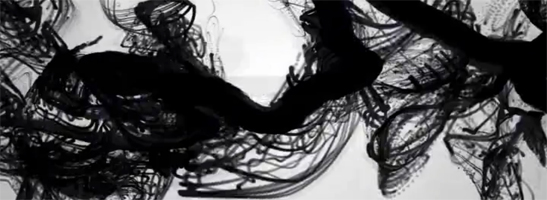
To bring our concept to life, our team hired an international team of sound designers (Soundlings) to compose a piece that will be premiered at the catwalk show. These musician-sound designers have a wide range of expertise: live performance, creative coding, making new instruments, games, noisy music, dance, installations – the list does go on. That’s really the power of the Soundlings collective – the libraries of sounds, noise and music that they’ve compiled over the years can be shared and transformed in a way that the whole is greater than the sum of the parts. Our team selected the Soundlings not only because we assumed they have a wealth of content already available – but specifically for their ability and willingness to experiment.
We were also looking for a way to deliver the sound, a system that was more than just a fancy set of speaker boxes to make the experience of the sound unique. (This was of course also due to the fact that asking the audience to wear headphones during the fashion show was simply not a possibility). The system that we chose makes possible a technique we discovered was essential to reviving the narrative of fashion culture: immersion.
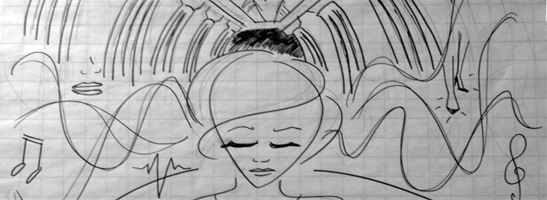
But what is immersion?
Immersion is a concept that’s often studied in games, film and virtual reality. The idea is that coupling a visual image with audio totally consumes the seer-listener and captures every bit of her attention. The effect becomes exceptionally more powerful if the experience has interactive possibilities. A number of fields of study: acoustics, electronics, as well as data exchange play a part in making immersive audio a reality. For example, to produce a 3D soundscape for a game, the sound design must respond to a player’s actions in the game; i.e. if an enemy is approaching, the game sound should signal this to the player. The experience, although it’s only a controller and a screen, must be convincing. The idea is that if the sound is designed to “scary”, the player is mentally and physically experiencing fear.
This project represents the intersection of new media principles and the principles of sound design. Audio immersion is a means of narrative storytelling – and now it’s being brought to a Dutch fashion show for the first time. Keep checking back here as we get closer to the show – we’ll be able to share in full detail what we’ve been developing since February.
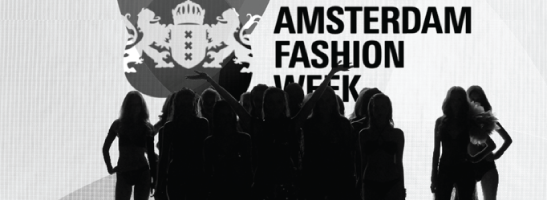
Don’t you like our new blog style? Special thanks to Myrthe for her work in transforming past posts. We’re looking at the final to-do list for now until the fashion show. Several weeks away, and we still have quite a number of things to arrange. Keep checking back at amsterdamfashionweek.com for the official release of the Catwalk programme schedule and the revealing of the time and location of the iNDiViDUALS show!
What’s remarkable is the fluidity with which these things are getting accomplished. There’s quite a number of stakeholders working simultaneously, sometimes in collaboration. This is truly the essence of applied research: taking scientific conclusions that arise from academic practice into the business world (in this case, the fashion industry) and working together to create something new.
This week specifically we’ve been working to produce a video documentary that reveals our team’s production process to a more general public. We want to highlight what we at the MediaLAB are responsible for and our thought process in deciding to produce the outcomes that we did. We’ll be telling the story of how we chose for a sound concept and why we decided on the particular technique that we did. During storyboarding, we’ve envisions a sort of reality-tv style interview with ourselves, mixed in with shots of our workspaces the activities that we’ve organized.
What makes our project special is that what we’ve organized to be made will be presented in a full production. The MediaLAB has been more and more working towards bringing the interns’ functional prototypes outside of an experimental environment and into real context that they’ve been designed for. Our work and the work of our sound designers will be revealed at the Amsterdam Fashion Week. The Light Challenge team, if they win the competition, will also be permanently installing what they’ve prototyped in a residential neighborhood. The team working for TWC could see their Connected Collecting app on SmartTVs throughout the Netherlands. The Stiho group could be hired to implement their prototype for an app that archives the knowledge of construction workers.
Some of us were just on-location in Den Haag where there was some serious experimentation going on. We’re also developing a marketing strategy to real-time monitor and mediate the social media response to the show.
Further textual, audiovisual, or photographical reflections that appear in print and across the web will ideally driving traffic right back here and to our innovation partner’s online presence as well. Not only is a goal of the project to attract attention for the students of AMFI and the institution itself, but for our team, the mediaLAB and the new media/design culture of the Netherlands in general.
Although it won’t be exactly the same as attending the iNDiViDUALS show, we’re also designing our booth and a sound experience for the end presentation. Want to be there? Register here. Ideally the experience will simulate the idea of experiencing the narrative of fashion culture in a totally new way.
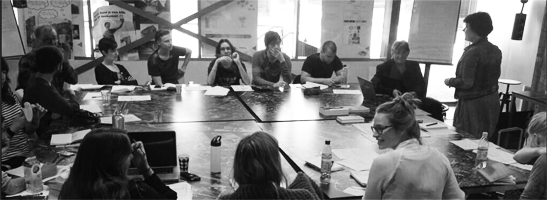
Workshop by Fenny Lücker
This morning we began discussing innovation resources and entrepreneurial processes Fenny Lücker from the Amsterdam Center for Entrepreneurship. She worked with us to help us understand how innovation plays a role in our project. Gideon Bazen, Manager of the HvA’s Digital Life project was also in attendance to advise on how the projects from the mediaLAB can be brought to market.
Examining how innovation is produced and is qualified as successful brought us insights into our own development processes anticipating how the world-at-large will assess the value of our project has been something that’s been kicking around in the back of our minds for some time now. Now that we’re in the final phases of production, its important to define very clearly what the unique selling points of our solution are and how they can be conveyed and emphasized.
Fenny shared with us the work of Saras Sarasvathy and her book “Effectuation: Elements of Entrepreneurial Expertise”. Sarasvathy examined the work of twenty-nine entrepreneurs in their fresh attempts to begin an innovative business. What Savas found was that entrepreneurs were not focused so much on fighting competition, but working with others to fabricate markets; spending affordably to achieve goals rather than seeking purely financial aims.
Identifying the unique selling points of our concept amongst our peers is also leading to a more concrete idea about how we can communicate about the project. A the cult fashion audience, a technical audio media, an academic audience, as well as a greater public all need to be catered to. Rather than just project interns, we were challenged to think as entrepreneurs. Understanding how we can invest in our idea required us to define our value proposition for each customer. Fenny presented several examples of similar services (KLM vs. RyanAir; the circus vs. Cirque de Soleil) to help us realize that two services that accomplish the same thing can exist simultaneously because they have different value propositions.
Although this to a large extent an academic project, our team still needs to view our assigner as our client. Being clear about the role of facilitating partners as co-creators lends itself to the idea of the internal customer. Managing the relationship with the customer during and after the project phase is also an important factor in defining the value proposition. The team was asked tough questions about the means of delivery for the solution – not just the physical transport of the ‘solution’ itself but the communication of its value.

Concepting continues…
We’ve decided to pursue the sound experience concept [if you hadn’t already guessed from our former posts]. As none of the members of the group are audio engineers, this phase of the project has involved seeking a significant amount of external expertise. From traditional composition, theories of immersion, to actually programming software, there are a variety of talents that the team has sought. Also, we’ve been been spending quite a lot of time perusing the project blog of STEIM, the Studio for Electro-Instrumental Music, which is also conveniently based in Amsterdam. Their archive of links to former installations, exhibitions, performances, and workshops has proven invaluable to the way we think about the possibilities.
Naturally we’ve broadened the original concept to explore the applicability of several sound reproduction techniques. Rather than focus only on designing an appropriate soundtrack, we’ve also investigated different ways to deliver such an experience. Some of the techniques we’ve thought about are below:
Binaural Recording
A dummy head is used to mimic the way that the human head experiences sound. If you click on the picture to the left, you’ll get linked to a handy video by this head’s manufacturer that gives a straightforward demo about how the technique works. We’re certainly interested in spatializing sound in a way that doesn’t compromise the drama of the story.
Augmented Sound
This technique is usually defined as having live sound being altered by some kind of input, in this case from a computer. The Inception app served as our inspiration to investigate what it would be like to create an experience where members of the audience were able to interact with the soundscape directly. Even Hans Zimmer himself says it’s awesome. Check it out for your iPhone. This idea would be useful to still allow audience members to engage with each other during the show but offer us the opportunity to curate their experience.
Audio Illusions
The perceptual paradox of listening is one that’s not easily overcome by any particular type of sound delivery. Like we did, have a listen to the top ten sound illusions that should boggle your ears. Although this is not necessarily readily implementable into a soundtrack for a fashion show, these illusions served to enlighten and inspire us about how our brains are hard-wired to perceive sound. Included is the virtual barber shop, which is a very good demonstration of binaural recording technique in combination with sound perception. Don’t forget to use your headphones!

DIY workshop
Today, we participated in an Arduino Workshop with Arthur Bennis from Hogeschool Arnhem and Nijmegen.Although he’s a Human-Computer Interaction professional by day, his hobby is creating DIY musical instruments. Our colleague Frank Kloos organized the workshop for us, as we were hoping to break free from abstract theory and participate in the making process. We got our hands busy with the Arduino Uno and the Dangershield from SparkFun.
First, we experimented using different types of sensors such as precision light sensors, touch sensors, potentiometers and distance sensors. Although none of us were programming experts, Arthur made it easy for us to follow along with the coding that was required in order to make the Arduino do what we wanted it to.
Dion and Marissa were quite excited to have early on made a light that added to the atmosphere of our workshop. They continued on to add another LED, and programmed the Arduino to flash like Christmas lights! Although this specific activity of making a holiday atmosphere has arguably limited direct relevance for the project, going through the motions of connecting wires to computers and testing how it works is absolutely essential.
After a lunch of boterhammen, we came back to the table and had some time to understand in what ways we can use the Arduino to communicate with the computer as it regards making music. Naturally, we discovered how many possibilities there are when we combine the sensors with a musical software program. The musical atmosphere is then in part determined by what the sensors detect.
Arthur used a wider combination of musical software than we’re used to seeing: Wave Window [a software oscilloscope], Soundflower [a tool that routes data between musical software programs] and Ableton Live [a virtual mix console/synthesizer rack]. However, we’re using Logic Pro 9 to start adding sounds to our ideas. Arthur will likely remain a useful resource as we continue adding interactivity to our concept.
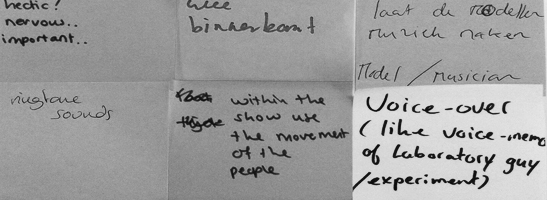
Part one of the design phase
As our previous posts have mentioned, we’ve had a serious turn of events that is cause for concern. After pitching an ingenious idea, now we have to come up with the resources and the knowledge to make our dreams a reality.
Naturally, we need to be realistic and rational if we’re trying to transform ideas into innovations. This involves making an inventory and evaluating the technical possibilities and abilities within the group. But more importantly, the question for us: what possibilities are within the boundaries of our concept? With such an ill-defined question, we’re busy finding experts that can help us morph our possibilities into the creation of a physical design.
In other news, this week we also had a design presentation with all the other MediaLAB’bers. Because we structured the presentation as a brainstorming/co-creation session, we got some extremely helpful feedback from our colleagues.



